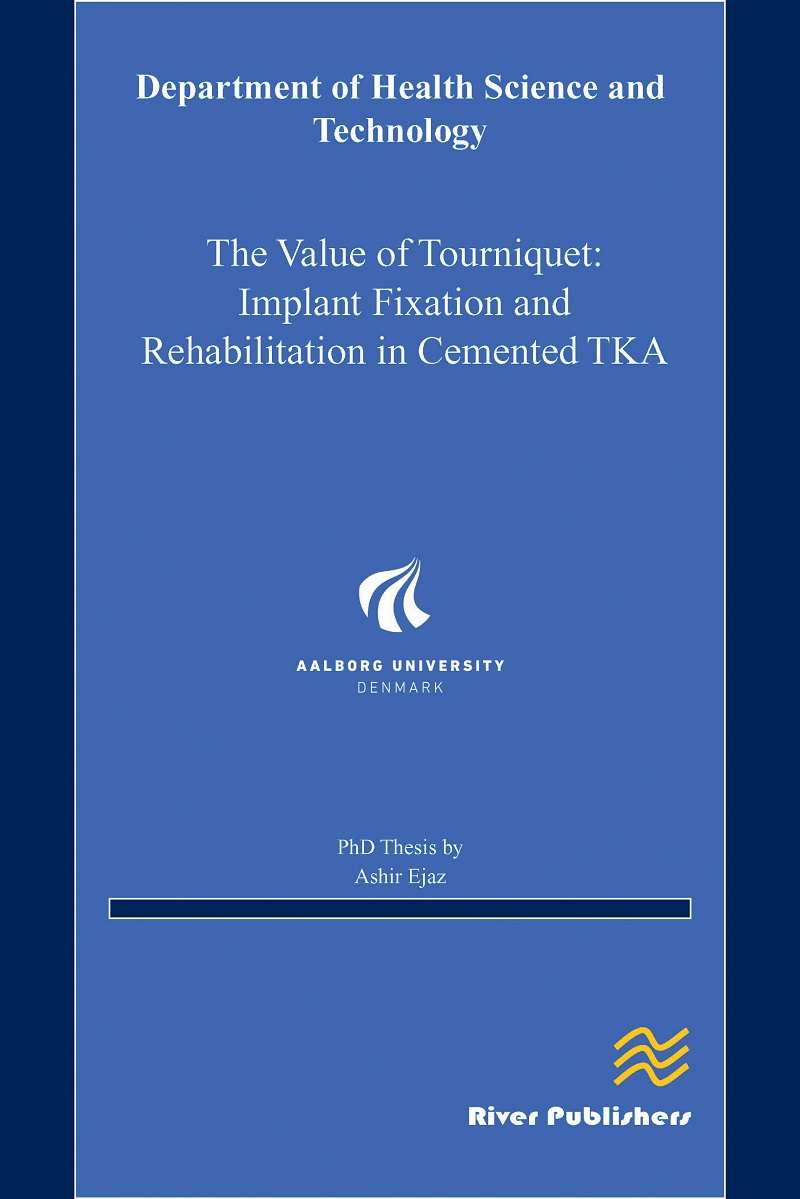River Publishers Series in
The Value of Tourniquet: Implant Fixation and Rehabilitation in Cemented TKA
Author: Ashir Ejaz, Department of Orthopedics, Aalborg University Hospital, Aalborg, Denmark
Pneumatic tourniquets are widely used in orthopedic extremity surgery. Especially in TKA they have an established place, ensuring surgical overview in a bloodless field and decreasing bleeding. Despite knowing that tourniquet causes ischemia and soft tissue damage surgeons still carry on using them and are often not conscious of the exact extent of ischemia and damage tourniquets can inflict. One of the main reasons for using a tourniquet in TKA is theoretical i.e., assuming that the quality of cementation is enhanced, thereby improving implant fixation.
Studies using RSA have shown early tibial migration is associated with increased risk of short- and long-term revision. Due to the special loading kinematics of the tibial component in the TKA procedure, good cementation is of vital importance, and it is of great concern to surgeons if this is not achieved, especially if a tourniquet has not been used.
The advantages should always be balanced against the risks involved in tourniquet use. The advantages have been considered to include absence of intraoperative bleeding, better surgical overview and concurrently a reduction of surgical time and better cementation of the components. The disadvantages include nerve palsy, vascular and skeletal tissue injuries, severe thigh pain and swelling, and diminished range of motion. Cases of impaired cardio-respiratory function, pulmonary thromboembolism and rhabdomyolysis induced by tourniquet use have all been reported. Due to hypoxia and impaired postoperative tissue perfusion, wound healing disorders and early infections have been attributed to the use of a tourniquet.
The aim of this study was to investigate in a randomized controlled setup, in which patients were allocated to a tourniquet group and a non-tourniquet group, whether the absence of a tourniquet during cemented TKA would affect:
1. The clinical outcomes regarding rehabilitation (KOOS) and knee range of motion
2. The ischemic conditions in soft tissue
3. Implant fixation
Studies using RSA have shown early tibial migration is associated with increased risk of short- and long-term revision. Due to the special loading kinematics of the tibial component in the TKA procedure, good cementation is of vital importance, and it is of great concern to surgeons if this is not achieved, especially if a tourniquet has not been used.
The advantages should always be balanced against the risks involved in tourniquet use. The advantages have been considered to include absence of intraoperative bleeding, better surgical overview and concurrently a reduction of surgical time and better cementation of the components. The disadvantages include nerve palsy, vascular and skeletal tissue injuries, severe thigh pain and swelling, and diminished range of motion. Cases of impaired cardio-respiratory function, pulmonary thromboembolism and rhabdomyolysis induced by tourniquet use have all been reported. Due to hypoxia and impaired postoperative tissue perfusion, wound healing disorders and early infections have been attributed to the use of a tourniquet.
The aim of this study was to investigate in a randomized controlled setup, in which patients were allocated to a tourniquet group and a non-tourniquet group, whether the absence of a tourniquet during cemented TKA would affect:
1. The clinical outcomes regarding rehabilitation (KOOS) and knee range of motion
2. The ischemic conditions in soft tissue
3. Implant fixation
The Value of Tourniquet:
Implant Fixation and
Rehabilitation in
Cemented TKA
